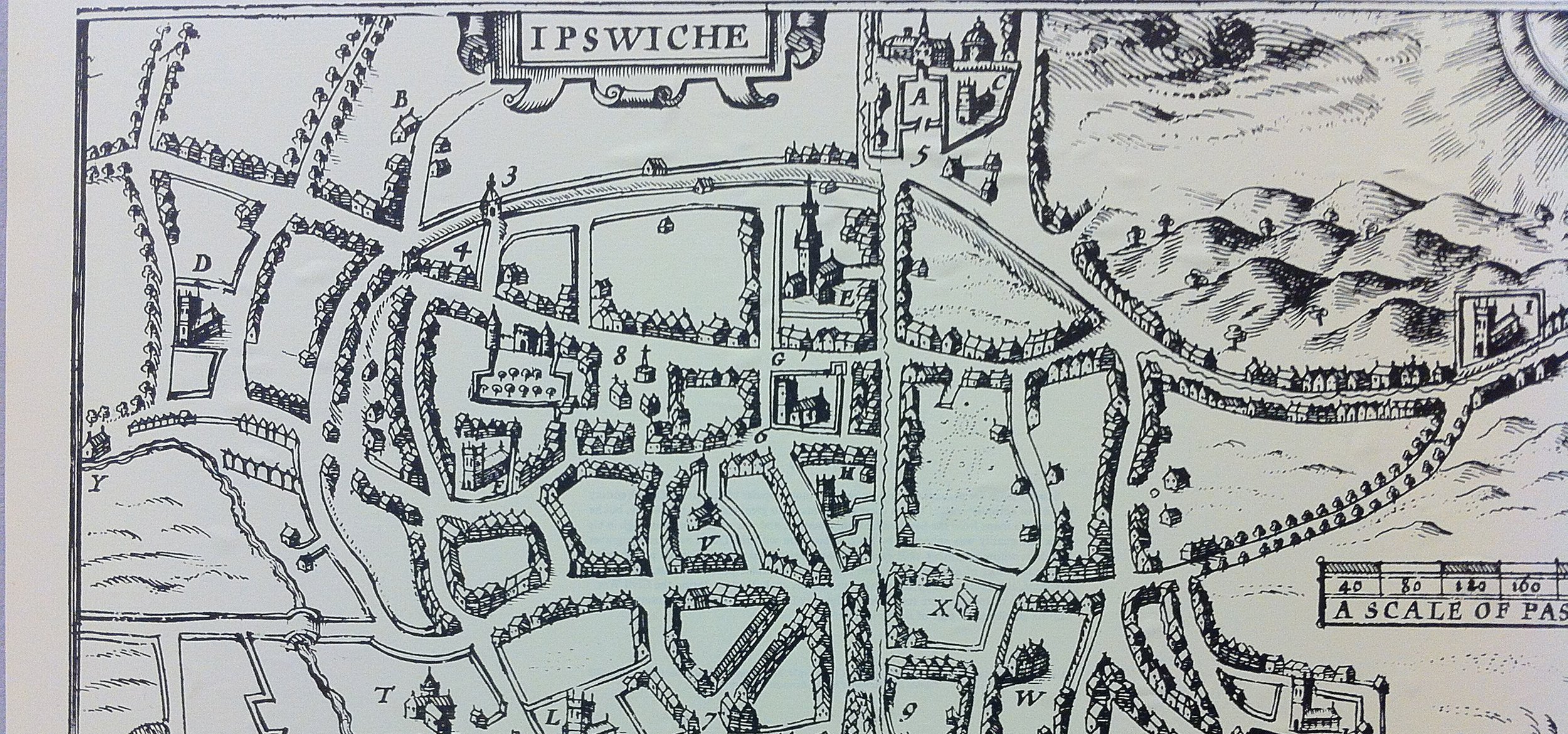
A Short History of The Saints
The settlement at Ipswich was founded around 480AD, on the banks of the river Gipping, providing a useful, sheltered place for trade with continental Europe. This makes the town a contender for the title of longest continuously occupied town in England. Growth escalated in the Middle Saxon period, around the 7th century, with the area around Stoke Bridge being the focus for settlement. As the Saxon period progressed, Ipswich was a trading hub or emporia as indicated by the use of wic in the name. Textiles and wool were exported, and wine, leather and stone imported. A substantial amount of fine European pottery has been found in the town over this period, indicating that traders brought their own crockery, preferring it over the less sophisticated Ipswich Ware being produced in the town at this time.
St Peter’s Street looking south with the tower of St Peter’s Church in the background
St Nicholas Street being swept clean c.1880s
Ipswich is of great importance in the progression of pottery in England in the Saxon period. After the fall of the Roman Empire, the techniques of production regressed to local hand built constructions. A change is noted in Ipswich in the late 7th century seeing mass production of far more sophisticated wheel turned, kiln fired pottery. This is in part due to the abundance of clay in the area but also spring water. Ipswich ware was carried to a great part of the country but rarely outside of it. The evidence for this is seen in the kilns dotted over the Carr Street, Cox Lane and Upper Orwell Street areas. They were prolific, long lived and for the time, very sophisticated.
Ipswich’s prominence in the country waxed and waned through the next few centuries. The series of ramparts and later walls show that the town needed fortifications against the Vikings and later invaders. Ipswich was recognised in the Doomsday Book as Gepeswiz and in 1130AD, the Priory of St Peter’s and Paul was established on what was probably the site of an earlier timber church of St Peter.
St Peter’s Street from near the gate of St Peter’s Church (right) c.1900
St Peter’s Street looking north towards Silent Street
Ipswich has had many notable descendants including Cardinal Wolsey, born in the town in the late 15th Century. His role in the court of King Henry VIII led to him amassing great power as well as detractors. His downfall came about when he failed to secure an annulment from Henry’s marriage to Catherine of Aragon, from Pope Clement VII. His legacy in the town is most notably Wolsey’s Gate, an entrance to what would have been a school for boys.
The history of the town can be seen on many fine buildings and parks in the town, particularly Christchurch and Holywells Parks, the Blackfriars remains, the Ancient House and the many shops along St Peter’s Street and Silent Street.
Ipswich Maritime Trust
Ipswich Maritime Trust is a registered charity which came to life following the Maritime Ipswich 82 celebrations. We were formed at a time when the Wet Dock was in decline and our original aim was to find ways to help bring the Wet Dock, now the Waterfront back to life, something largely achieved over the last 35 years.







